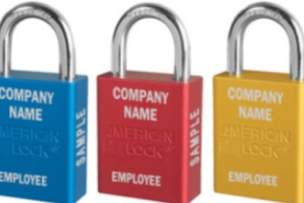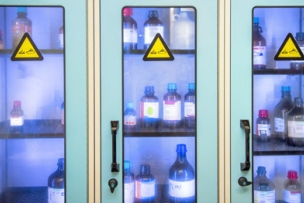The rules for first aid can be confusing—especially when it comes to the differences in first-aid kits. Follow these three tips in the video.
Video Highlights
- OSHA laws are broad for first aid. ANSI standards can help—but you need to understand the most common injuries and safety situations for your facility.
- Bottom line: You need adequate supplies and adequate staff training to give first aid in the workplace. Preventing a fatality is job No. 1.
- To understand your gaps in first aid, it pays to get an assessment and to track all injury events in a log. And get trained on CPR and AED use. It could save a life.
For a full transcript of the video, click here
The rules for first aid can be confusing—especially when it comes to the differences in first-aid kits. Follow these three tips in the video.
Video Transcript
Be Free From Frustration:
3 Tips for Unpacking OSHA and ANSI’s First-Aid Rules
THE BETTER MRO SAFETY HOW-TO SERIES
When it comes to first aid, OSHA’s rules are—well—vague because the law is broad. But ANSI first-aid standards on kits, cabinets and training can help fill in the details.
Where should a safety manager start? Learn the most likely injuries by type for your working environment.
Every plant is different—and the dangers to workers are unique. An automotive assembly line is not a warehouse. A medical device shop is not an electronics distributor.
Do you know how to treat a minor cut or sprain?
How do you recognize a heart attack, stroke or pulmonary event?
There are three broadly defined but essential OSHA sections on first aid—A, B and C.
Section A states: “The employer shall ensure the ready availability of medical personnel for advice and consultation on matters of plant health.”
It’s tricky. How do you define “ready availability of medical personnel”?
Section B states: “In the absence of an infirmary, clinic or hospital in near proximity to the workplace … a person or persons shall be adequately trained to render first aid. Adequate first-aid supplies shall be readily available.
You need to have one or multiple people trained in first aid and have supplies nearby.
Section C states: “Where the eyes or body of any person may be exposed to injurious corrosive materials, suitable facilities for quick drenching or flushing of the eyes and body shall be provided within the work area for immediate emergency use.”
Here are three quick tips for dealing with all the first aid you might need.
#1: Really Know Your Hazards and Injuries
In many cases, an injury log that you can share with regulators when an incident occurs will go a long way to quelling concerns.
A log is reactive and necessary for reporting, but it won’t solve for repeat offenders or reduce injuries.
Hire a vetted, certified firm to come in and help.
Knowledge is power. For small businesses, OSHA gives free, local consultations and are separate from enforcement and do not result in penalties or citations.
Take advantage of this service.
#2 Know First-Aid Kit Details—And Where Kits Need to Be
There are four types of first-aid kits designated, by class, by ANSI.
ANSI standards may be voluntary, but they will help clarify the action you took by following an accepted best industry practice.
There are two “classes” of first-aid kits.
Class A kits focus on common workplace injuries.
Class B kits are for higher-risk environments and have more supplies.
There are also four types of containers—labeled as I, II, III or IV. They are distinguished by portability and environmental conditions, such as indoor versus outdoor.
Also think about whether your first-aid supplies can be easily accessed by a safety manager or trained workers.
Proximity to your kits and having the right volume of them are a best practice. Not having first aid close by can be dangerous. This includes automated external defibrillators—AED devices are used to revive someone from sudden cardiac arrest.
An AED can help analyze heart rhythm and can deliver an electric shock to help re-establish heart rhythm.
#3: Train, Train, Train … Get That Training
Training is essential.
Forty to 50 percent of heart attack deaths happen before reaching a hospital, which is why CPR and AEDs are essential.
Safety managers and employees who might encounter injuries need to know how to administer CPR, how to use an AED and anything else that might prevent an unfortunate fatality.
Here are three great training resources:
- The National Safety Council
- The Red Cross
- OSHA
For first-aid assessments:
Talk to MSC
As with everything safety-related, it comes down to a few simple truths …
Perform a safety assessment, document the findings and keep an injury log.
Know the OSHA rules and ANSI standards—and the kits, supplies and training needed.
Protect against the hazards most likely to occur in your specific facility.
To discover comprehensive training programs that will ensure your first-aid cabinets and kits meet ANSI standards, visit https://mscdirect.com/resources/safety.
For more expert advice on how to ensure your shop’s safety and improve MRO,visit https://mscdirect.com/betterMRO
Related Articles
Recordable versus reportable incidents: What’s the difference? Find out in this quick guide on complying with OSHA’s recordkeeping regulation, 29 CFR 1904.
While ensuring a safe and compliant work environment is top priority, sustaining that safety and optimizing efficiency are also essential.
How to properly select and use cabinets to safely store your flammable liquids.




Talk to Us!
Leave a reply
Your email address will not be published. Required fields are marked *